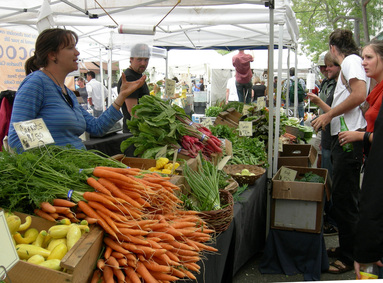 by Lauren Fiechtner, MD The places where we live, work, and play, sometimes referred to as the “built environment,” likely influence health in several ways. My particular interest in this topic began after seeing how challenging it is for some of my patients to eat healthy in the environment where they live. I began doing research on whether access to healthful food establishments may help people be healthier and, if they need, to lose weight. The federal government has advocated bringing healthy foods to all communities. The Centers for Disease Control and Prevention endorsed increasing the number of supermarkets in under-served areas as one of 24 strategies to help communities prevent obesity. The White House Childhood Obesity Task Force in 2010 emphasized the need to improve access to healthy, affordable food, by eliminating so-called food deserts, defined as urban and rural neighborhoods without access to fresh, healthy, and affordable food.
There is evidence that the obesity epidemic has been driven by an increase in the availability of processed, affordable, and highly marketed food, leading to over-consumption. But on the flip side, research on whether access to healthy food establishments promotes healthy eating has shown mixed and contradictory results. A few studies have shown a protective effect of supermarkets, others have found no association, and some have found an adverse effect. Why the varying results? Doing research on the built environment can be difficult because "not-so-good" food establishments often are located close to "good" food establishments (i.e., a fast-food restaurant within or sharing a parking lot with a supermarket). When these places overlap, it’s really hard to know how they are affecting people who live or work near them. Furthermore, the commercial databases used to identify supermarkets for research aren’t perfect; they have lots of mistakes. People have complex lives too. Most studies do not ask participants which supermarket they shop at, but simply map the participants to the closest supermarket. We know this is not adequate. Some of us shop far away from our homes (or closer to work) because we like the store, we like the prices, or it’s convenient for other reasons. Another big hurdle is that we can’t really define healthy and unhealthy food establishments. Supermarkets sell lots of junk food, and you can eat healthfully even at fast-food restaurants. So what is the true relationship between supermarkets and children’s BMI? Stay tuned. We are conducting a study which asks families the top five food establishments they shop at and links them to validated addresses and information on the quality, availability, and price of healthy and unhealthy foods in each of these establishments. We hope with improved methods we may be better able to finally answer this question.
0 Comments
Your comment will be posted after it is approved.
Leave a Reply. |
©2017 WeighingInBlog. All rights reserved. 401 Park Drive, Boston, MA




 RSS Feed
RSS Feed

